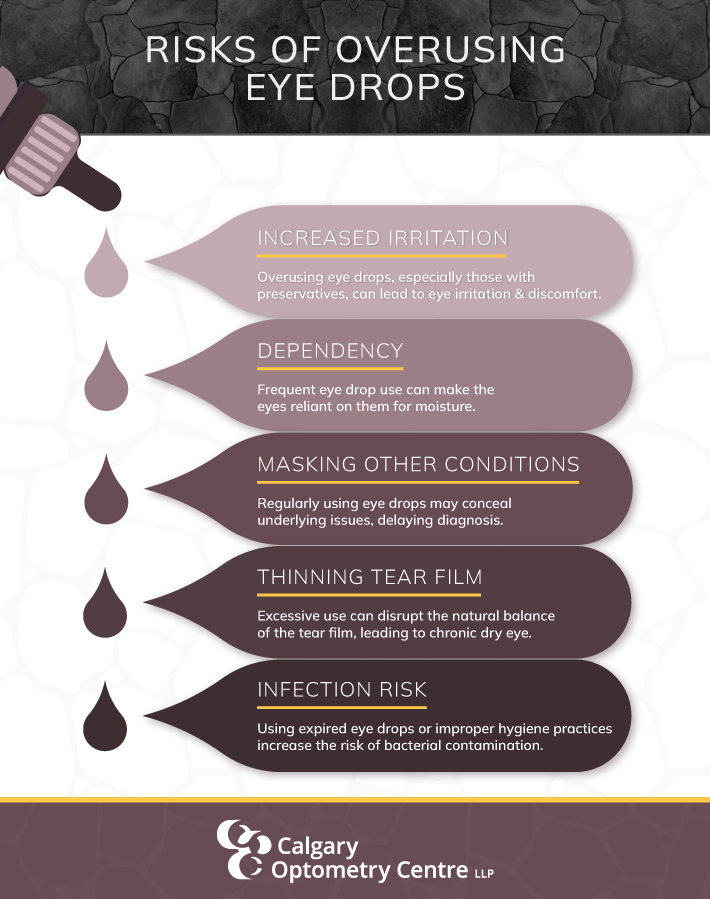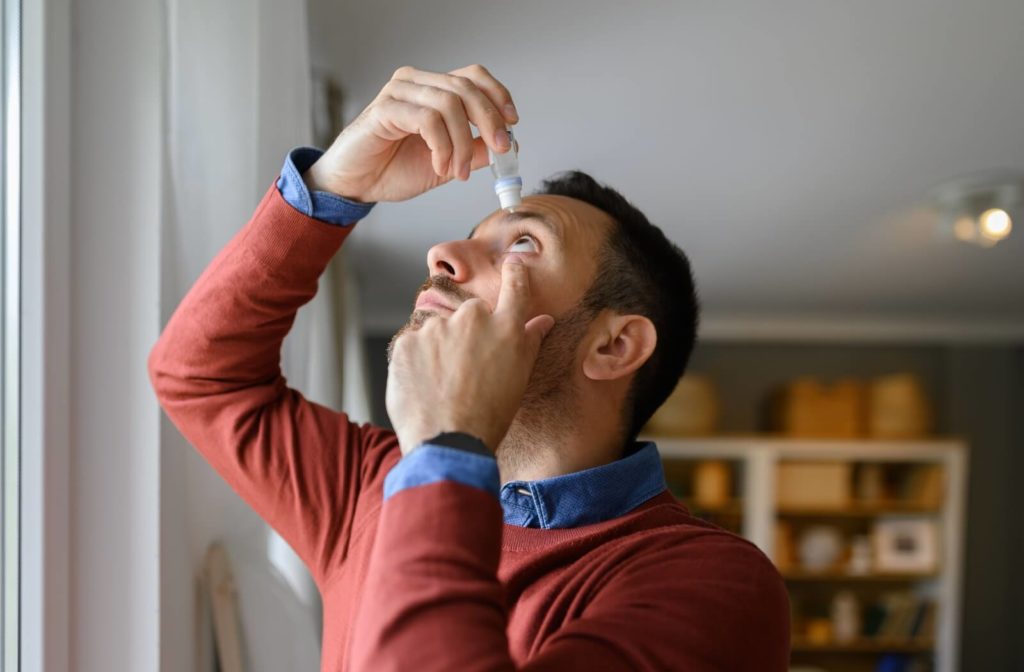Eye drops are a staple in many medicine cabinets, offering quick relief for ailments like dry eyes and redness. But could they be doing more harm than good in the long run?
Eye drops can be both beneficial and potentially harmful depending on how they are used. While they can provide immediate relief for various eye conditions, overuse or reliance on certain types of eye drops can lead to irritation or worsen underlying issues.
If you’re unsure whether you’re using the right type of eye drops or if you’re using them too often, it’s a good idea to book an appointment with your eye doctor. They can provide advice and may even offer an alternative that works better for you.
How Eye Drops Work
Eye drops serve various purposes, from moisturizing dry eyes to delivering medication for eye conditions. They often contain ingredients that mimic natural tears, helping to keep the eyes moist and comfortable. Different types of eye drops can be used more frequently than others, and some should only be used for specific conditions.
Types of Eye Drops
There are several types of eye drops, each designed for specific purposes:
- Lubricating eye drops: Often referred to as artificial tears, these are used to alleviate dry eyes by providing moisture and mimicking natural tear production.
- Antihistamine eye drops: These are aimed at reducing symptoms of allergies, such as itching, redness, and puffiness, caused by allergens such as pollen and dust.
- Antibiotic eye drops: These drops are prescribed to treat bacterial infections of the eye. They help eliminate the infection and prevent it from spreading.
- Anti-inflammatory eye drops: These drops reduce inflammation and swelling and are often prescribed after eye surgery or for conditions like uveitis.
- Glaucoma eye drops: These are specifically formulated to lower intraocular pressure in the eyes, helping to prevent damage to the optic nerve and preserve vision.
- Decongestant eye drops: These drops are primarily used to reduce redness in the eyes. They work by narrowing blood vessels in the white of the eye.
Preservative vs. Preservative-Free Eye Drops
When choosing eye drops, a key consideration is whether they contain preservatives or not. Preservatives are added to eye drop solutions to prevent the growth of bacteria and extend shelf life. Common preservatives found in eye drops include benzalkonium chloride (BAK), which is effective but can also cause irritation, particularly with long-term use.
Frequent use of preservative-containing eye drops can lead to discomfort and even exacerbate eye dryness or redness due to the cumulative effect of the preservative on the eye’s natural tear film.
Preservative-free eye drops are often recommended for individuals with sensitive eyes or those who require frequent application. These formulations are typically packaged in single-use vials to maintain sterility without the need for preservatives.
While preservative-free eye drops are generally considered gentler on the eyes, especially for those with dry eye, they can be more expensive and less convenient due to their single-use packaging.
The Downside of Overuse
While eye drops can be helpful, there are some potential risks associated with overusing them. These include:
- Increased irritation: Overuse of eye drops, especially those with preservatives, can lead to increased eye irritation and discomfort.
- Dependency: Frequent use can cause a rebound effect, where the eyes become reliant on the drops for moisture.
- Masking underlying conditions: Regularly using eye drops might conceal underlying issues, delaying diagnosis and treatment.
- Thinning of the tear film: Excessive use can disrupt the natural balance of the tear film, leading to chronic dry eye.
- Infection risk: Using eye drops past their expiration date or in unsanitary conditions increases the likelihood of bacterial contamination.

Alternatives to Eye Drops
Eye drops can be a great tool for eye issues and occasional irritation. But if you have persistent eye issues, there may be something else causing them. Eye drops might simply be a band-aid rather than tackling the root cause.
Addressing Dry Eye
Dry eyes are a prevalent issue often treated with lubricating eye drops. However, there are numerous alternative methods to help alleviate symptoms and tackle the root causes:
- Professional dry eye treatments: Consult with an eye care professional for treatments such as punctal plugs or intense pulsed light (IPL) therapy, which targets the underlying causes of dry eye.
- Humidifiers: Increasing indoor humidity helps maintain eye moisture, especially in dry or air-conditioned environments.
- Warm compresses: Applying a warm, damp cloth over the eyes can unclog oil glands and improve tear quality, providing relief from dry eye symptoms.
Enhancing Eye Nutrition
Proper nutrition plays a significant role in maintaining eye health and preventing conditions that may otherwise require eye drops for relief:
- Omega-3 fatty acids: Incorporate foods rich in omega-3s, such as fish, flaxseeds, and walnuts, which are known to support eye health and alleviate dry eye symptoms.
- Antioxidants: Vitamins C and E, lutein, and zeaxanthin can be found in leafy green vegetables, fruits, and nuts, all of which help protect the eyes from oxidative stress and support overall eye health.
- Hydration: Increased water intake can help maintain adequate tear production and keep eyes moist and comfortable.

Combating Digital Eye Strain
With the growing prevalence of digital devices, digital eye strain has become a concern commonly managed with eye drops. Alternatives to consider include:
- The 20-20-20 rule: Every 20 minutes, take a 20-second break and look at something 20 feet away to reduce eye fatigue.
- Adjusting screen settings: Lowering brightness, increasing font size, and using screen filters to reduce blue light can alleviate strain and prevent long-term issues.
- Ergonomic workspaces: Set up your computer screen at eye level and about an arm’s length away. Proper lighting and an ergonomic setup can significantly reduce strain and fatigue.
The Final Verdict on Eye Drops
The notion of whether eye drops are “bad for you” largely depends on how often you use them and your individual eye health needs. For occasional relief of dry eyes or other minor irritations, eye drops—whether preservative-laden or -free—may be a great option. However, for those who rely on them multiple times a day, preservative-free options are typically considered a better choice. For personalized advice, come see our team at Calgary Optometry Centre. We’re happy to provide guidance on what kind of eye drops might benefit you, how often to use them, and what alternatives could help.




